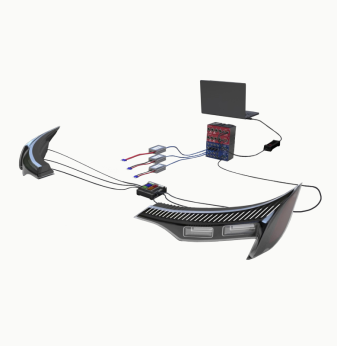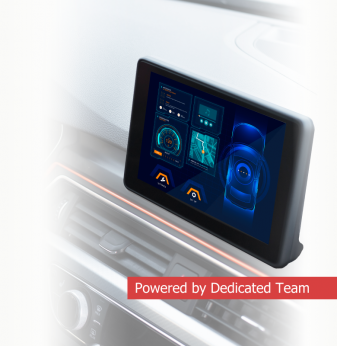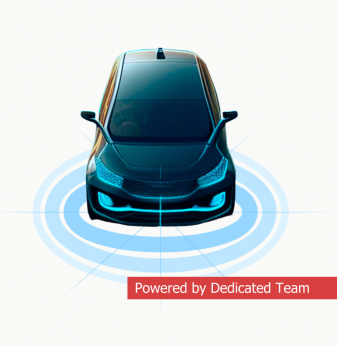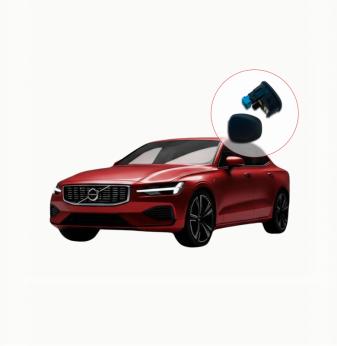EV Chargers: How It Works. An Engineer’s and User’s Perspective
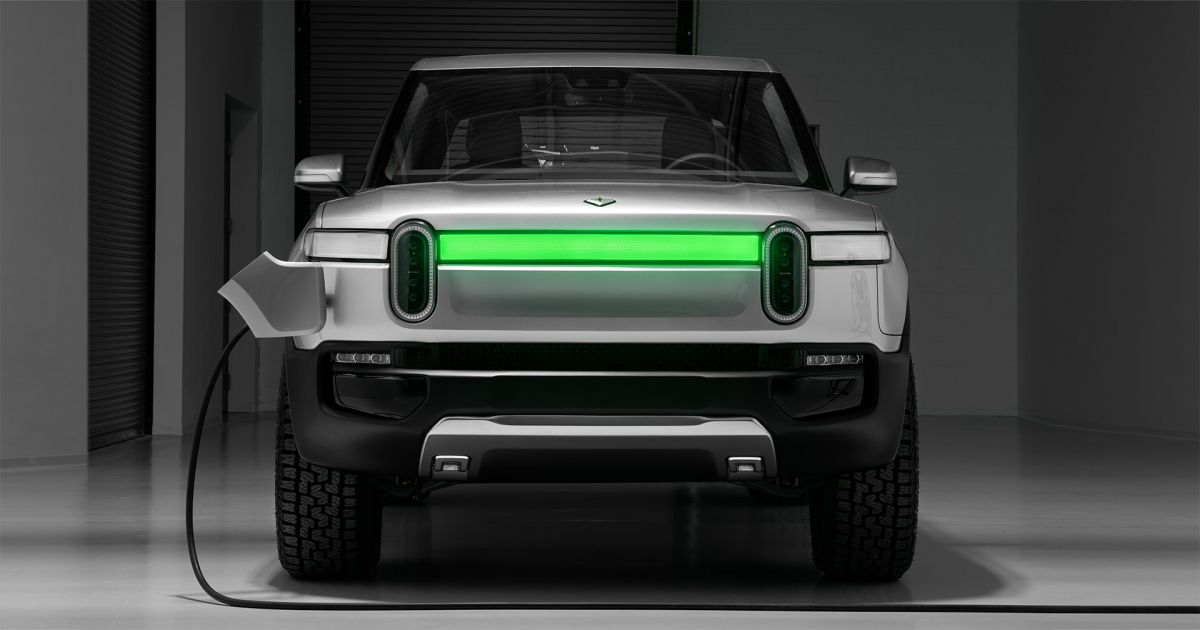
Rivian electric pickup with a front charge indicator. Photo: courtesy of Rivian
Let's dive into the world of electric vehicles and will learn how EV chargers work on the hardware and software side to understand the prospects for users and engineers willing to develop charging solutions and battery management systems.
With the advent of electric vehicles, conventional drivetrains with thousands of moving parts are giving way to electric drivetrains with fewer than twenty such parts. Innovation in this new market often focuses on three main components:
- Charging stations and batteries.
- Traction motors.
- Power electronics.
Engineers are working to increase the driving range of new cars, improve their safety, service life and, of course, reliability. The most interesting transformations are happening right now with chargers and power devices. For example, the new generation power devices based on silicon carbide (SiC) are now taking over the electric car markets and growing by 27% per year. And the infrastructure of charging stations is spreading across a wide range of countries, including emerging economies. Just a few weeks ago Lithuania — the EU country where our HQ is located — joined the Tesla Superchargers network, becoming the first adopter in the Baltic region. And in this article, we will take a look at what an EV charging ecosystem is all about.
Our questions will be answered by the industry expert Andrei Holmak, one of the world's first engineers to work on commercial deployments of electric vehicle charging solutions. Andrei got an engineering degree at university, was engaged in embedded development, and then he moved to Canada and joined a small company that was one of the first to work with electric car chargers. As a result, this company became the leader of the Canadian market and the second in the United States. We chatted with Andrew on Zoom and are sharing with you the most interesting part of our conversation:
— What's going on in the EV charging market in general right now?
— For those who are new to this topic, it might seem that a charger for an electric car is something like a phone charger. In fact, it is a complex ecosystem.
This market is still immature. If any company or engineer wants to enter this industry, now is the best time. The whole infrastructure is changing; e-vehicles and their chargers are changing, too; power suppliers and urban infrastructure are transforming, and interesting projects are being born. These changes will affect everyone in the long run.
Three segments have formed in this charging market right now: a household sector, a private one, and a public one. Sixty percent of EV chargers now are used by households, where users install a charging base in their house or, if possible, in the parking of their apartment block.
Private chargers are the charging stations of private companies. For example, a bank installs a charging point for its employees who have EVs. Companies that deliver goods to Amazon have a car fleet, and they install a network of charging stations in various cities.
Public charging stations are available to everyone and are located in cities and along highways. This system works like your subscription to mobile or digital TV packages: you choose your plan and provider to use the services.
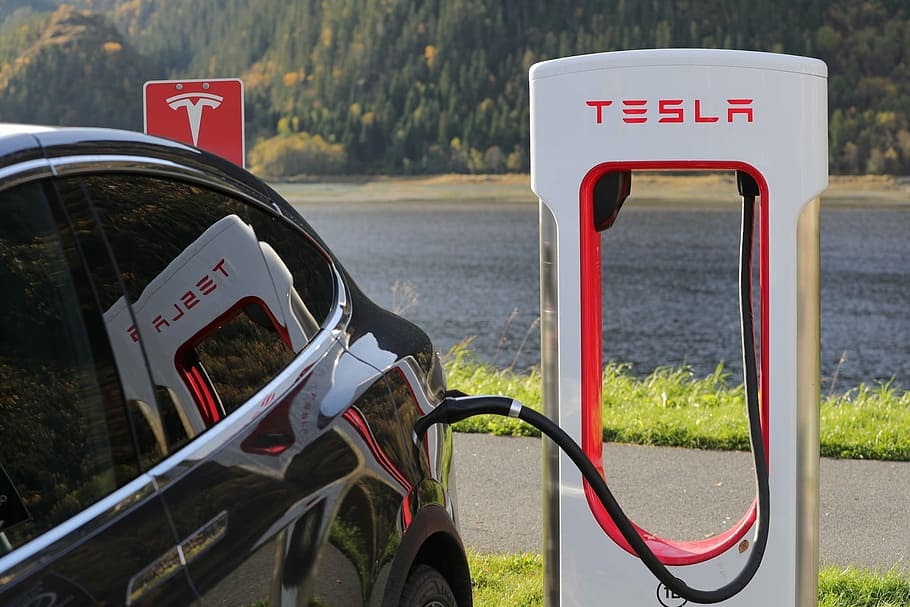
This autumn, Lithuania became the first country in the Baltics to join the Tesla Superchargers network
– How do these three segments – household, private, and public differ?
– Let's start with the household segment, where the equipment can be simpler if we talk about hardware. It uses what is called Level 2 chargers. The owner of a charger doesn't need to set up access rights to the charging plug. The main task is to charge a car, and the usage statistics on your smartphone is unimportant in this case.
But the fact is that in North America, the cost of electricity can vary depending on the time of day – electricity suppliers try to compensate for peak loads in the morning and evening by raising rates. That's why home chargers are now being integrated into smart grids, the electricity management systems. Home chargers with this feature can be turned on initially on low current, and at night, when electricity costs are lower, the charger automatically turns on full power. It takes about 6–8 hours to charge the car.
Integration with a smart grid, of course, complicates the system: it requires connection to a server, and the server itself is connected to a power supplier, so the maximum current on such EV chargers is controlled at different times. It's a curious engineering challenge, but there are even more exciting projects, such as the vehicle to grid communication interface (ISO15118). According to this concept, a car can not only charge but also give out electricity to power your house when electricity is expensive. It’s like a power bank on wheels. Moreover, owners of such a device can sell their electricity – return it to the grid and get money for it.
– What is the EV charger in terms of hardware stuff?
– There are three levels of charging. The first level chargers are like phone chargers: you plug them into any outlet for 110-120 volts, 6-8 amps.
The second level (the most common) requires 220–240 volts with AC current up to 30 amps. A car with such a charger requires from 6 to 30 amps.
Let's take a look at what's inside the battery charger for home use:
- A power converter board (GFCI or Ground Fault Circuit Interrupters), which converts the voltage and has several types of built-in protection.
- A communication control board to interact with a car, often chargers of this level use an analogue interface (it uses a so-called pilot signal for communication).
- A communication board, which can have its modem with wi-fi or cable.
Chargers for private and public use also have built-in security to restrict access and screens to communicate with their users. They may also have a controller for integration into the building management system.
Third-level chargers for offices and public places look like big refrigerators along highways in cities and at gas stations. They are rather sophisticated in technology: 100–150 kilowatts, hundreds of amps, 480 volts. These are devices with constant current, so-called DC chargers. They need from 10 to 30 minutes max to charge your electric car. They have the same hardware stuffing and a graphical interface.
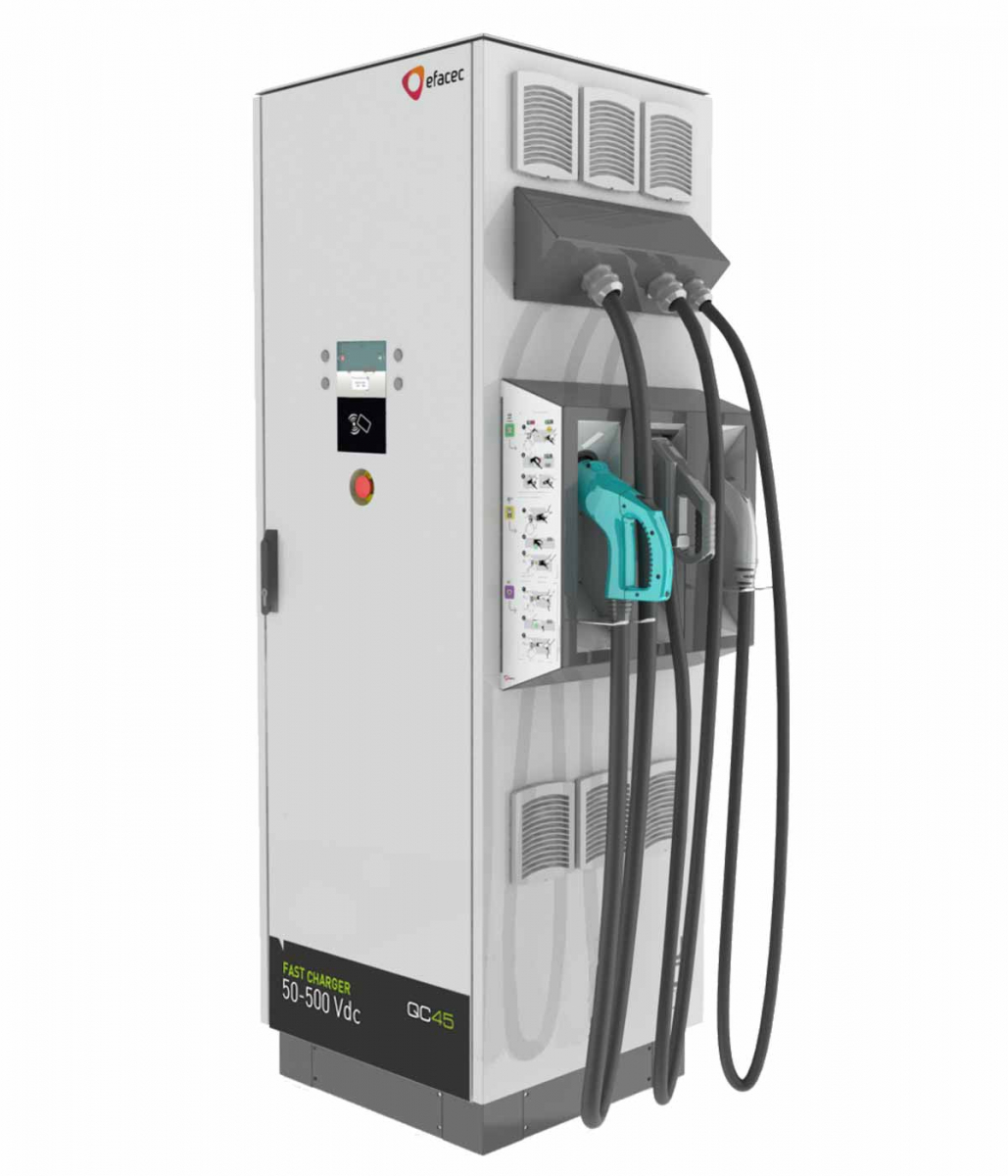
QC45 (Level 3), a charging station with the CHAdeMO and CCS support. Suitable for Nissan, Chevrolet, BMW, Ford, Tesla, etc. EVs.
A distinctive component of DC chargers is the additional power module for current conversion and control. And when it comes to hundreds of amps, the charging cable becomes quite heavy – not everyone has the strength to plug it in. But Tesla, for example, uses water cooling of their cables, so they are quite light.
In terms of communication, Level 2 and Level 3 chargers are similar – they use the same modems to connect a charger to a server. And there are new challenges for companies in this area: the modems installed in older charging stations can no longer support the necessary speed and amount of data being transferred from the charger to the server.
– You say that the old modems are no longer sufficient for data transmission? Why? What makes the volume of this data grow?
— Take public charging stations as an example: they can have a simple hourly charge, they can have dynamic rates, with a discount based on the electricity consumed, time of day, or promotions by specific electric car manufacturers. So the complexity of communication increases as well.
Another example is predictive maintenance projects when artificial intelligence is connected to the chargers, which uses its algorithms to predict the need for tech support.
– Which interfaces for data transfer are used most often and why?
— Two types of interfaces are used: between the charger and the modem + between the modem and the server. And the modems themselves can be either embedded or external one.
External modems are mostly used for private and public solutions when you need to connect many chargers to one modem.
The interfaces between the charger and the modem are usually Wi-Fi or ZigBee. ZigBee is the most efficient one, but it has the same bandwidth as Wi-Fi, and it is not always enough. Wi-fi is easier, but not always convenient to install in public places (outdoors or in parking lots, where signal quality is not always good).
The interface between the modem and the server is simple enough, it is a direct connection to the Internet or cellular connection with a SIM card. Engineers have moved away from cables and Ethernet because the chargers are installed outdoors, where it is inconvenient to run cables underground. It is much easier to use a SIM card, which has become affordable (a few dollars a month for tech solutions).
– Let's talk about the charging infrastructure: what is the difference between charging for electric cars and gas stations for gasoline-powered cars?
— To charge an electric car, you can use a special app and specify the type of your car in it. Such an app will tell you how to plan your way, where to charge and how much it will cost. And each of these services – logistics, integration with payments are separate engineering tasks.
At the B2C level, the market develops and offers its rewards: bonus programs for using certain chargers. In terms of B2B, the situation is also interesting: if we compare it to mobile communications, there is an opportunity to exchange data from different operators (vendor companies).
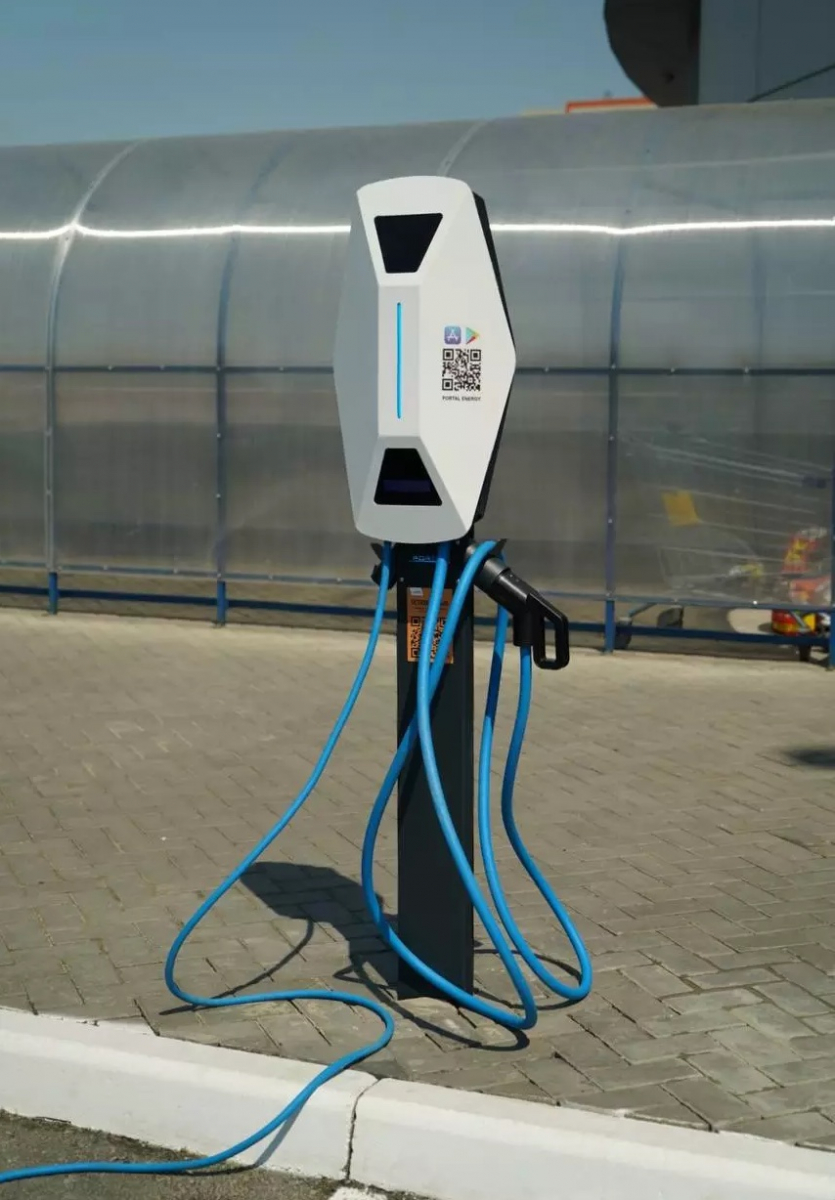
Sputnik, а compact charging station by the Portal Energy company
– When will electric vehicles communicate with the chargers themselves?
— Today, digital communication is implemented only in Level 3 chargers. The interface between a charger and a car works like this: the electric car says "I'm ready to charge, I need 15 amps" and the charger determines the maximum amount of current the car can consume.
The previously mentioned ISO15118 standard comes with a plug-in-charge feature, enabling a car to authorise itself in the system, i.e. users do not need to swipe their charging card in order to log into their account and receive electric power.
Right now, we can see the most complex communication at the "charge-server" level, not between cars and chargers.
– What’s the situation with standards for this topic?
— It all started with companies that had a lot of experience in hardware development. Then the market needed more software applications to serve the data that came from the chargers they made. Each manufacturer tried to implement its own standard – to make a standard protocol for communication between its chargers and the servers.
But clients don't want to be tied down to a single manufacturer. For example, take the city of Montreal. As a customer, they want to have the freedom to choose their suppliers – they want to be able to buy charging stations from different companies and then connect them to the city’s own unified system.
It’s bad enough that each manufacturer tried to promote its own protocol, but it’s also safe to say that these protocols weren’t very well optimized. I don't want to throw any shade on embedded developers, but back then, and even to this day, their protocols were at the binary level, where every bit is vital. When it comes to big data, such protocols are hard to maintain and modify.
Customer demands have forced us to move to more complex protocols. Thus, various standards for communication between the charger and the server have started to emerge. The OCPP (Open Charge Point Protocol) appeared in Europe. Communication standards in the charging station network have also started to emerge. At some point, charging station manufacturers had no choice but to incorporate these protocols into their solutions.
Although universal standards have not yet been fully adopted everywhere, their implementation is gaining popularity and they continue to evolve because the market is still quite green, as it were – not everything has stabilized at the moment.
– So how are standards created? Is it a company-level effort, or is it more important to have input from industry organizations that are looking to compromise?
— The OCPP is an open standard. It was created by a committee of representatives from various companies in the Netherlands. This open-source project involved not only charging station manufacturers and software developers, but also various educational institutions.
– What if you look at this topic from the perspective of a smart city, where charging stations are only part of the subsystem of a larger infrastructure. What do you think about our future – is it possible to coordinate all the parts of this infrastructure so that they work in unison?
— I don't believe in a single universal standard. Certain standards solve certain problems. For example, there is the OpenADR standard, which allows you to remotely manage the power of connected electrical devices. It balances spikes in power consumption and chargers fit into this concept perfectly. It can be part of a smart city, but it solves a specific problem. Therefore, there will be quite a few specialized standards like this.
– And how can you get involved in such infrastructure development projects for electric transport?
— It is difficult to foresee what will happen to this industry in five years' time. Right now, it is possible to experiment with different types of customers: work with banks, with municipalities, with companies with their own fleets of electric vehicles. If you focus on solutions to customer problems, you will automatically move the industry in the right direction. And as for gathering the requirements, there is a standard scheme at work here: product managers talk to customers, write down their problems, and then, together with their engineering teams, prioritize and select those problems where a solution will have the maximum effect, not only in terms of money but also in terms of new customers and partners.
Finally, let's share an encouraging forecast recently published by IDTechEx, a UK-based consulting firm: the electric car market will grow by 25% over the next decade and will continue to grow in all regions of the world for at least 20 years. So for those looking to enter the industry now is really the best time.
Our projects


